A Guide to Post-concussion Syndrome on Reddit
Post-concussion syndrome is downright frustrating to experience. Doctors often miss it during diagnosis, and even if they do make the diagnosis, treatment methods vary considerably from clinic to...
Published peer-reviewed research shows that Cognitive FX treatment leads to meaningful symptom reduction in post-concussion symptoms for 77% of study participants. Cognitive FX is the only PCS clinic with third-party validated treatment outcomes.
READ FULL STUDY
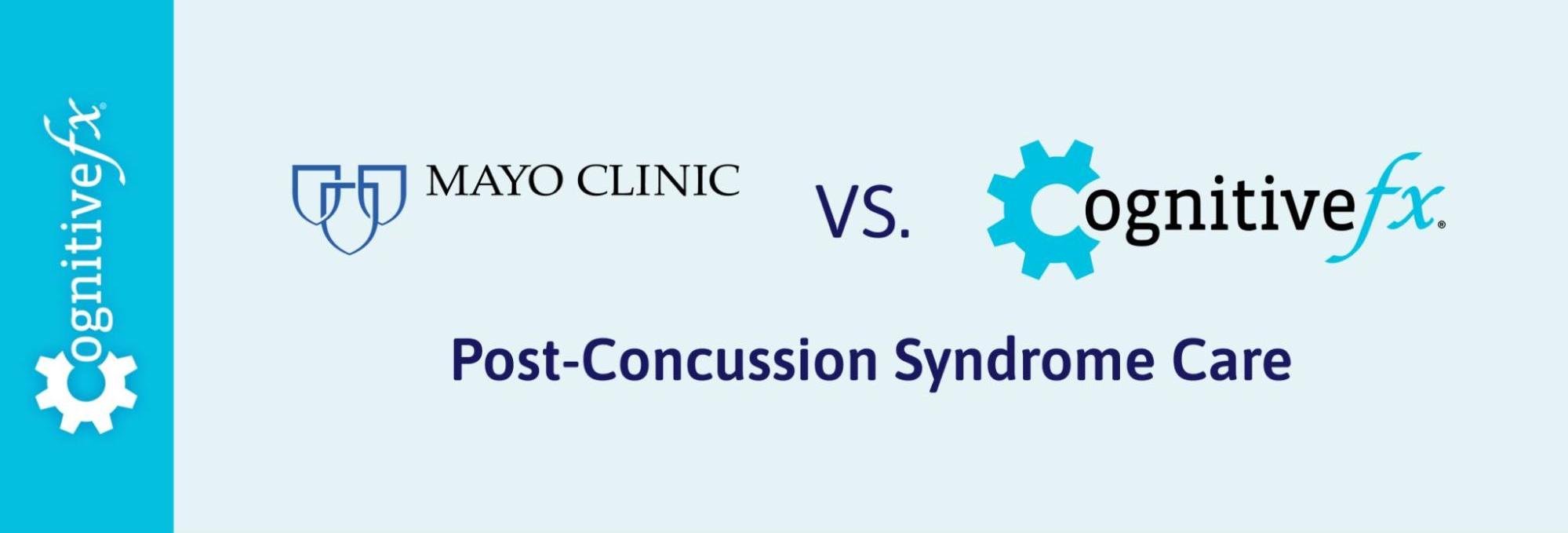
If you have post-concussion syndrome, you might think that the Mayo Clinic would be a serious contender as your treatment provider. After all, the Mayo Clinic is a world-renowned medical and research center with facilities in Arizona, Florida, and Minnesota. Patients have access to a wide range of medical specialties and healthcare options, with over 100 medical and surgical services available throughout the system. Their drive and dedication have earned them many top rankings in varied specialties, including endocrinology, gastroenterology, and cancer, to name just a few.
Despite their well-deserved renown for treating many different conditions, the Mayo Clinic has limited options for patients who are experiencing persistent symptoms after a concussion (a condition known as post-concussion syndrome, or PCS for short). Although their Brain Rehabilitation Clinic includes a team of neurologists, neuropsychologists, physiatrists, and a variety of therapists, these providers are more focused on treating patients who suffered a recent traumatic brain injury than on addressing persistent symptoms of an old head injury.
While Mayo’s large operation has developed and implemented state-of-the-art treatments for various diseases, they simply have not done so for post-concussion syndrome. While they offer some treatment options, they are similar to what you could get at any hospital.
At Cognitive FX, we specialize in post-concussion syndrome treatment. Our patients receive multidisciplinary therapy from a large staff of diverse specialists, all of whom are trained in brain injury rehabilitation. We also offer functional brain imaging that identifies which specific areas of your brain were affected by the injury and in what way. This allows us to tailor your treatment plan to your brain, something most clinics simply cannot do.
In this post, we explore what Mayo Clinic and Cognitive FX have to offer PCS patients through each of the following categories:
90% of our patients report reduced symptoms after their treatment at Cognitive FX. To see if you’re a good fit for our program, sign up for a consultation.

Mayo Clinic is a general clinic and research center with a long and diverse list of medical specialties covering everything from allergies to womens’ health.
However, at the moment, they don’t have a dedicated PCS department and only have one doctor (a psychologist) who specializes in persistent post-concussive symptoms. Unfortunately, psychological care is just one small component of PCS treatment. Psychologists can help patients cope with emotional and behavioral struggles that arise after a head injury, but they are not often equipped to address the root causes of those symptoms. Physical and cognitive symptoms, such as headaches, migraines, double vision, and dizziness, need a targeted rehabilitation program delivered by trained therapists. At the moment, this component is lacking at the Mayo Clinic.
Although they don’t have a specific department to deal with PCS patients, it is possible to request an initial appointment with the internal medicine department. From there, the physician could refer patients to different departments based on their symptoms. Using this approach, patients may receive medical attention and interact with a variety of specialists.
Unfortunately, there’s no guarantee that your medical care would involve experts in PCS. Often, doctors who do not specialize in PCS (such as those with a background in neurology or psychiatry) will attempt to treat individual symptoms with medications. (Note that we have another post explaining why post-concussion syndrome medications often do not work well.) Some doctors may refer you to therapy, such as physical therapy or occupational therapy.
Mayo Clinic has a few more options for patients who need treatment shortly after a mild traumatic brain injury (mTBI). Their medical professionals primarily focus on sport-related concussions (typically contact sports), with multiple sports medicine and physical medicine specialists available for adults and young children (pediatric care). In addition, they have staff trained to help patients develop a plan to go back to work or school after their initial injury, as well as provide education for both patients and their families about how to deal with concussion symptoms.
They also have an advanced care team for recent severe traumatic brain injuries from causes such as stroke, falls, or brain tumors. In their Brain Rehabilitation Clinic, they have a more integrated team of neurologists, neuropsychologists, physiatrists, and a variety of therapists, including physical, cognitive, vestibular, and neuromuscular therapists. The therapy they deliver is geared more toward an individual who needs to regain basic daily functions and potentially reintegrate with the workforce one day. It is not focused on the lingering, persistent symptoms that are hallmarks of PCS, such as brain fog, headaches, mild cognitive deficits, light and noise sensitivity, and so forth.
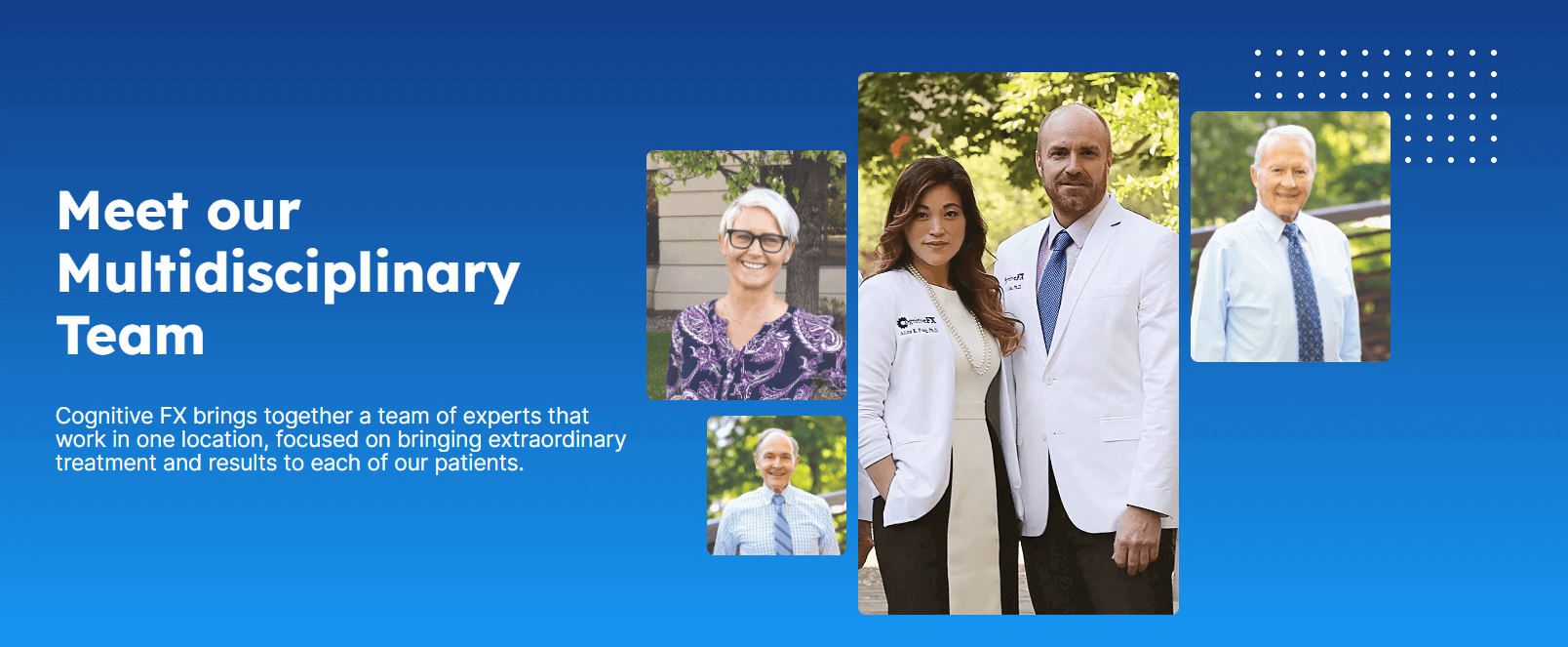
By comparison, Cognitive FX is a small clinic with a highly specialized team of doctors, therapists, and other healthcare providers. Our team includes medical specialties that are highly relevant to treating brain injury complications and long-term symptoms.
Our team includes the following specialists…
|
|
|
|
|
|
|
|
|
|
|
|
These doctors and therapists have years of experience focusing exclusively on post-concussion syndrome recovery. They are trained to adapt the exercises done during therapy to suit each patient’s needs and abilities.
Our team’s expertise is centered around treating the main causes of PCS symptoms:
One of the main reasons that PCS patients suffer from lingering symptoms of a concussion is neurovascular coupling dysfunction.
In a healthy brain, brain cells receive oxygen and nutrients from surrounding blood vessels. This dynamic connection is called neurovascular coupling (NVC). After a head trauma, certain regions of the brain may become out of sync with the blood vessels that connect with them. They might not receive the right amount of nutrients at the right time (for example, too much blood too early or too late). As a consequence, they struggle to perform the tasks assigned to them, and other areas of the brain often try to pick up the slack. This puts a significant strain on the brain’s function and energy levels.
As a result, patients develop a variety of common symptoms, such as post-traumatic headaches, brain fog, and fatigue. Thanks to our advanced imaging capabilities (which we describe in more detail below), our team can develop therapy regimens specifically tailored to your brain function patterns.
Our team is also trained to identify symptoms caused by dysfunction of the autonomic nervous system (ANS).
Briefly, the ANS controls vital functions (such as heart rate, blood pressure, and breathing rate) through the sympathetic nervous system (SNS) and the parasympathetic nervous system (PNS). The SNS regulates the “fight or flight” response, while the PNS is responsible for the “rest and digest” process. SNS and PNS should work together in harmony, but concussions disrupt this balance. In most cases, the SNS remains activated most of the time, causing symptoms such as fatigue, headaches, high blood pressure, heart rate changes, body temperature changes, digestive issues, problems sleeping, mood changes, and more.
In addition, we have a variety of therapists specialized in specific PCS symptoms, including vision, vestibular, and speech and language problems. These therapists can use an assortment of exercises tailored to each patient to address their symptoms. Sometimes patients receive one type of therapy in isolation, but often, our therapists combine exercises from multiple therapies to address different symptoms at the same time.
Patient story: How Sam Pembleton found relief from PCS when regular clinics couldn’t help
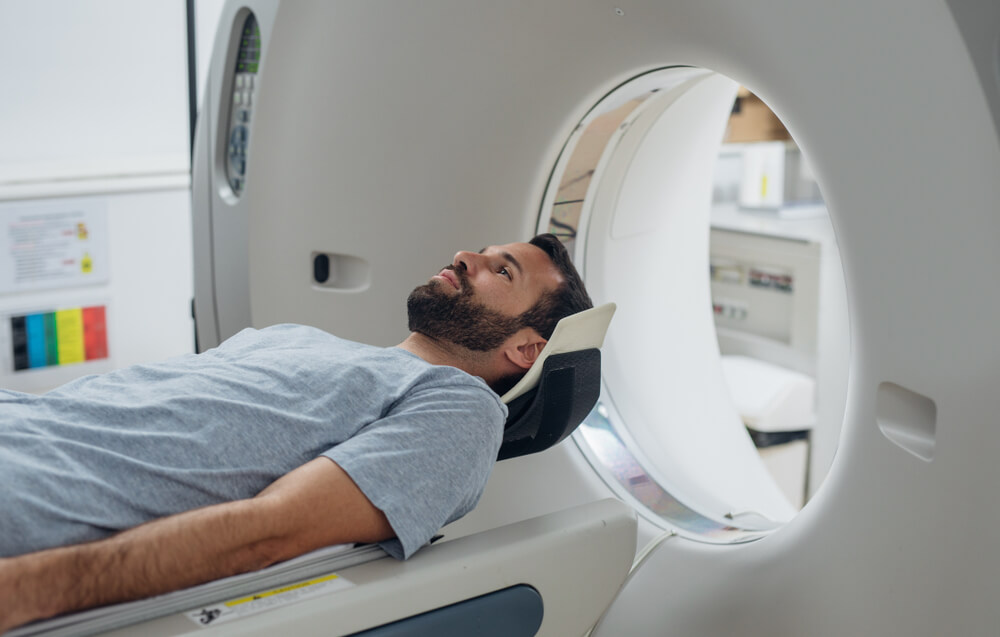
Mayo Clinic does not have a dedicated program of specific treatments for PCS patients. Patients can undergo a computerized tomography (CT) scan or magnetic resonance imaging (MRI) scan, but the clinic does not offer specialized brain imaging scans (like what we offer at Cognitive FX). These scans offer very limited information to treat PCS patients. They can detect structural damage, such as fractures or bleeding, but can’t spot the functional changes that occur after a concussion. We’ve written in more detail about why CT scans can’t detect concussions.
Mayo Clinic does offer patient evaluations for recent concussions. A doctor will evaluate the patient’s symptoms, review their medical history, and conduct a medical examination, including:
Mayo’s concussion care also includes baseline testing and concussion screening for athletes using the King-Devick test. This screening tool is designed to detect problems with vision, attention, and language, and it can be used when a sports-related concussion is suspected. Injured athletes read aloud a series of single-digit numbers on three test cards that progressively increase in difficulty. While this is a helpful, quick tool to assess patients immediately after an injury (especially if there was a loss of consciousness), it is not a good diagnostic tool for PCS patients.
All our patients receive a comprehensive evaluation, starting with the patient’s medical history and symptoms. Patients undergo a variety of exams, including:
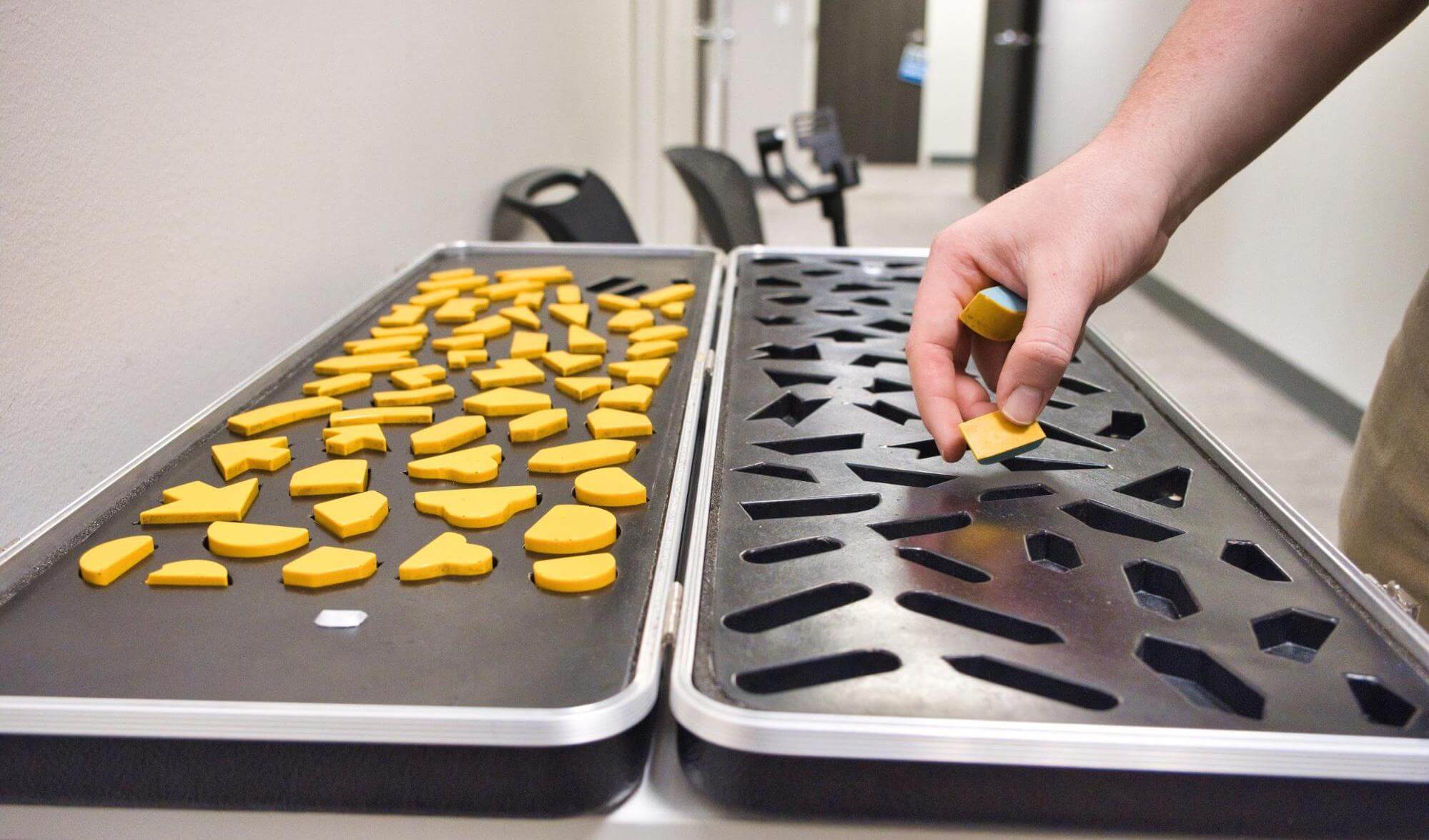 One of the timed exercises included in patient evaluations at Cognitive FX.
One of the timed exercises included in patient evaluations at Cognitive FX.
During the initial evaluation, our team also looks for signs of ANS dysfunction, and a neurointegration specialist evaluates how well the patient’s inner ear, eyes, and body communicate with each other. We repeat the same tests at the end of the treatment week to assess how much the patient has improved.
Patients also complete a brain scan called functional Neurocognitive Imaging (fNCI). This scan assesses blood flow in 100 different regions in the brain while patients complete a set of predetermined cognitive tasks. The resultant near-real-time images are then combined and compared to a healthy control database to identify the areas where NVC dysfunction is disrupting normal functioning. Key regions of the brain each receive a score that reflects their performance. Scores in the yellow to red sections indicate neurovascular coupling dysfunction in the areas of the brain responsible for that particular cognitive function.
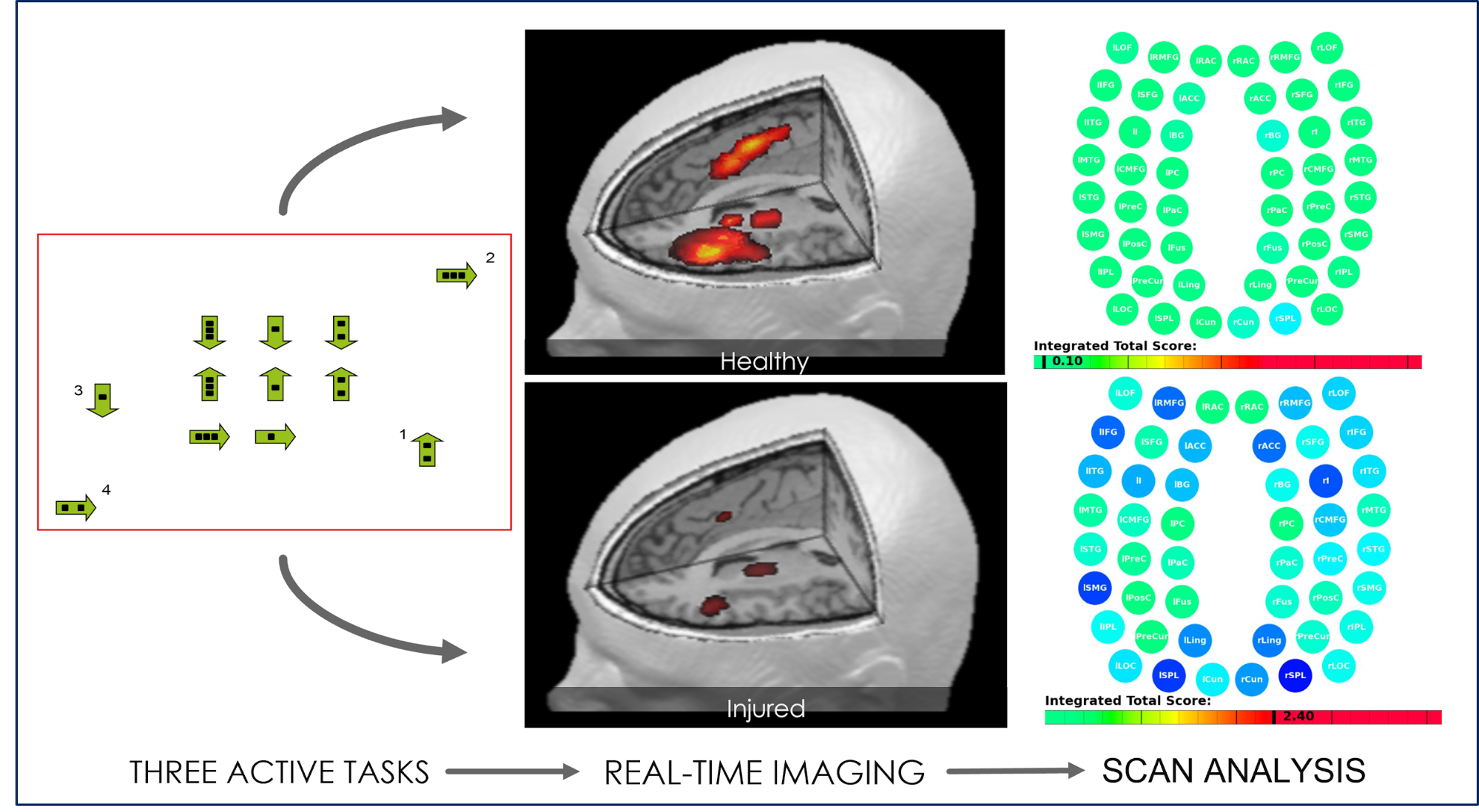
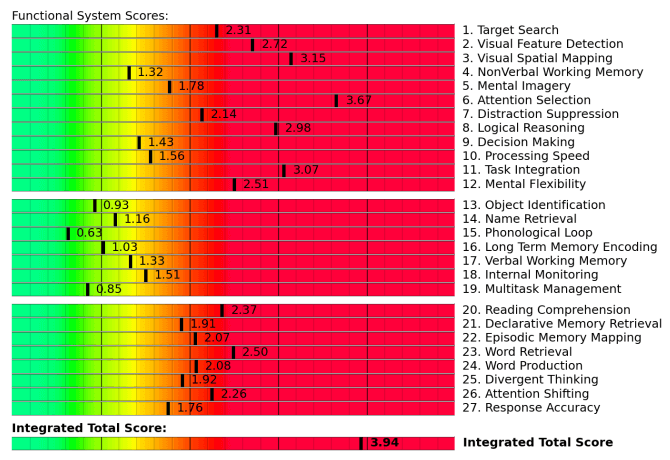
The scan also measures how different brain regions communicate with each other. In this case, regions in green are normal, whereas areas in blue are less active than expected. For example, in the image below, rACC (the right anterior cingulate cortex) shows less activity than usual. This area is crucial for attention and could contribute to memory problems if not functioning normally.
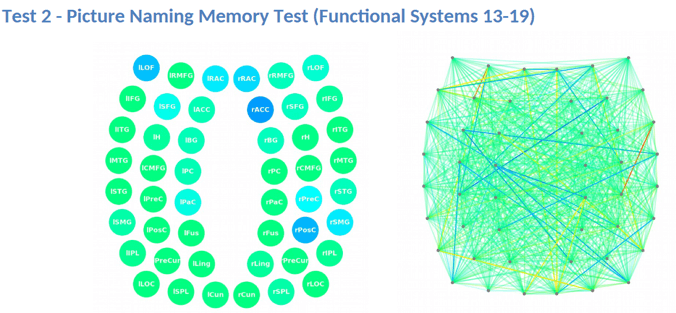
This scan is a key part of our patient evaluation and is something Mayo Clinic does not offer.
Patient story: How a former figure skater learned years of chronic illness was due to post-concussion syndrome
Once all assessments are complete, our team can design a personalized treatment plan to target exactly the areas of the brain that showed dysfunction.

Mayo Clinic doesn't have a dedicated team to assess and treat PCS patients, so the treatment patients receive can vary considerably based on the chosen provider.
Patients can obtain prescriptions for medication to help manage symptoms, such as antidepressants and sleeping pills, but these medications will not address the root cause of the symptoms.
For a more in-depth examination of this topic, please see our other blog post to learn more about the pros and cons of post-concussion medication.
In addition, patients might be able to visit therapists individually — i.e., one therapist for vision, another for physical therapy, and so on. There is no guarantee that different departments will share notes on their patients, so this is something you would need to advocate for as a patient. Treatment will be focused mostly on one symptom or related set of symptoms at a time instead of addressing the condition as a whole. Overall, this approach to treatment is something you could obtain without traveling to the Mayo Clinic.
Anecdotally, we’ve heard from past Mayo Clinic patients that if their symptoms from a recent concussion don’t improve, they’re eventually referred to a psychologist and prescribed meds for their symptoms. This approach rarely results in full recovery, which is when they seek treatment elsewhere.
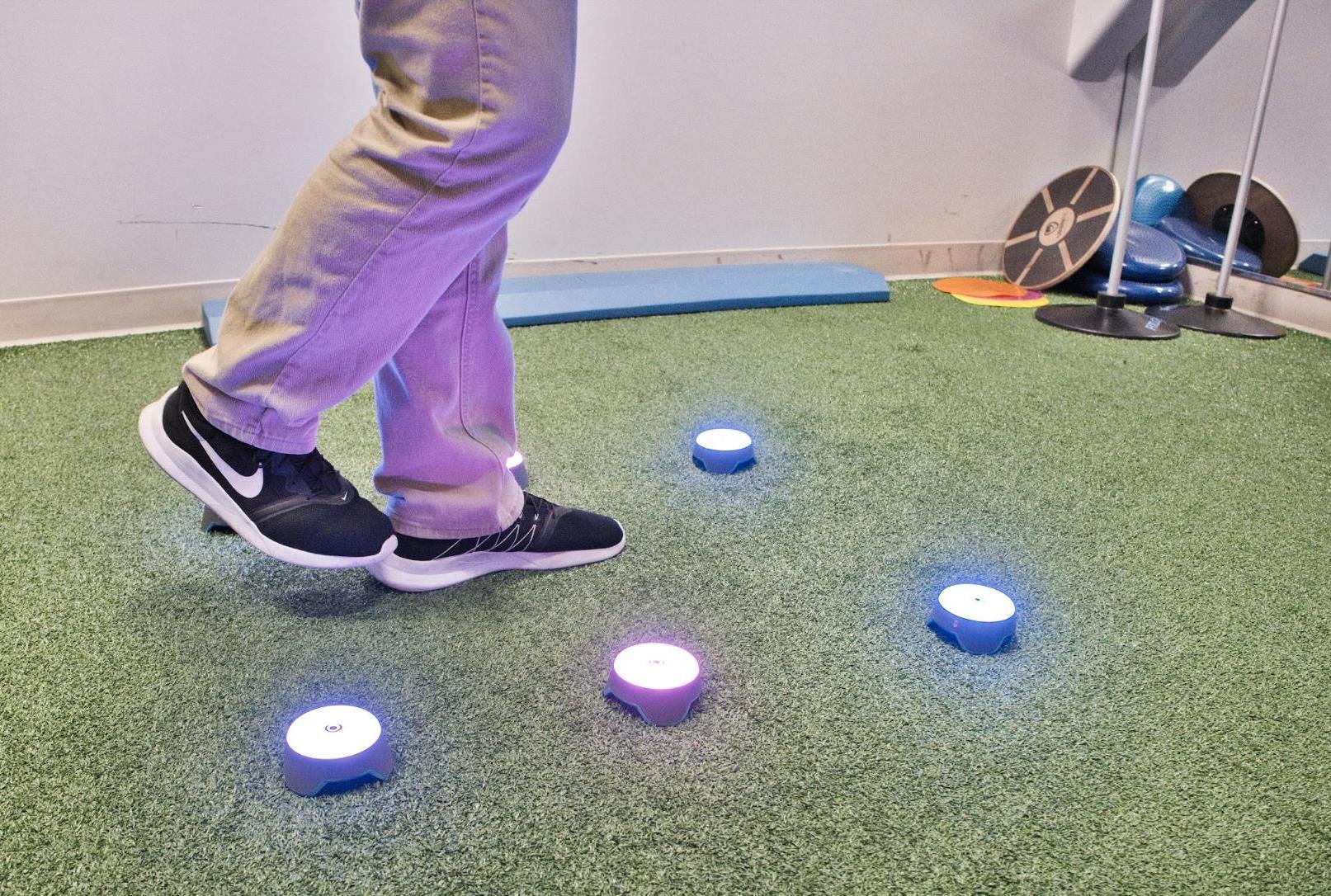
At Cognitive FX, we do not rely on medication to treat patients. Instead, we use a combination of aerobic exercise and multidisciplinary therapies to target the root causes of PCS symptoms in patients. Our team focuses on correcting neurovascular coupling disruption, autonomic dysfunction, vision changes, and vestibular issues. We also refer some patients for hormone testing.
Further reading: Post-concussion hormone dysfunction
Once patients complete their evaluation, they can begin treatment which involves a three-step cycle that is repeated multiple times: Prepare, Activate, and Recover.
Prepare
The prepare step starts with short intervals of aerobic exercise, typically on a stationary bike or treadmill. Physical exercise improves blood flow within the brain and triggers the release of a chemical called brain-derived neurotrophic factor (BDNF). BDNF promotes learning and memory and boosts the impact of subsequent therapies.
![EPIC treatment on an elliptical [V7]](https://www.cognitivefxusa.com/hs-fs/hubfs/EPIC%20Treatment%20on%20elliptical%20%5BV7%5D.jpg?width=1500&height=974&name=EPIC%20Treatment%20on%20elliptical%20%5BV7%5D.jpg)
Activate
During the activate step, patients attend different types of therapy to treat PCS symptoms, including the following:
| Type of therapy | Aim | Exercises |
| Cognitive therapy | Rehabilitate cognitive skills, like memory, attention, decision making, and reasoning. | Patients solve logic puzzles, identify word patterns while listening to distracting sounds, and memorize pictures, among others. |
| Occupational therapy | Help patients re-adjust to their daily activities by focusing on difficulties identified on their fNCI scan. | Our therapists guide patients through exercises that help the brain, body, and eyes coordinate with each other. They also discuss compensatory strategies for work and school. |
| Neuromuscular and physical therapy | Relieve headaches and neck pain, rehabilitate balance, improve body-brain coordination, and promote physical activity. | Our therapists use massages, stretches, and soft tissue manipulation to increase blood flow to the area, which decreases inflammation and pain. Our therapists also employ cognitive games and physical therapy exercises. |
| Sensorimotor therapy | Improve cognitive and physical skills and reduce symptoms of depression. | Patients follow simple movement patterns in time with a metronome to address cognitive, visual, and vestibular symptoms. For example, patients may be asked to clap in time to a beat while doing a search puzzle. |
| Vision therapy | Address vision problems, such as blurred vision, difficulty focusing, and light sensitivity. | Therapists use Dynavision, visual tracking exercises, the Brock String, and some other computerized technologies. If patients need further therapy after treatment, our therapists can help find a suitable neuro-optometric rehabilitation program. |
| Vestibular therapy (Neurointegration Therapy) | Help with a variety of vestibular issues, including poor posture, dizziness, and vertigo. | Patients engage in a series of gaze stabilization and balance exercises. For example, patients catch a ball while standing on a balance board or walk in a figure eight pattern while keeping their eyes focused on a point. |
| Psychotherapy | Improve the patient's quality of life, reduce anxiety and depression, and help with cognitive symptoms. | Patients meet with a clinical psychologist to evaluate their mental health status. For patients suffering with depression and anxiety, our therapists recommend cognitive behavioral therapy (CBT). We do not offer this type of therapy but can refer to a specialist. We do teach patients mindfulness exercises and other relaxation strategies. |
Patients often ask us how their treatment is personalized if everyone receives the same types of therapy. While most of our patients receive the therapies described above, the specific exercises and how they’re combined vary considerably from patient to patient and depend on the results of your fNCI scan. With this approach, over 90% of our patients experience verifiable improvements in symptoms by the end of their first week of treatment, and the average symptom improvement is over 60%.
Patient story: How this father & finance professional found freedom 33 years after a brain bleed
![EPIC Treatment exercise with headphones [V1]](https://www.cognitivefxusa.com/hs-fs/hubfs/EPIC%20Treatment%20exercise%20with%20headphones%20%5BV1%5D.jpg?width=2265&height=1425&name=EPIC%20Treatment%20exercise%20with%20headphones%20%5BV1%5D.jpg)
Rest
Finally, the third step in our treatment cycle involves periods of rest. These periods include breathing exercises, listening to brainwaves, neuromuscular massage of the neck and shoulders, and mindfulness exercises.
At the end of the treatment, patients complete a second brain scan to see how their brain is responding to therapy.
Patients also meet with one of our therapists to discuss their progress and how to continue recovering at home with their family members. Patients receive a set of exercises to do at home, which usually include aerobic exercises, cognitive games, and relaxation techniques. These exercises usually take about one hour every day, five days a week. When they feel better, patients can gradually do them less often. If needed, we can refer patients to additional specialists, such as neurologists, psychologists, and therapists.
Ready to take the next step on your recovery journey? Sign up for a consultation with a Cognitive FX team member.

Mayo Clinic has arrangements with numerous healthcare insurers, including Medicare and Medicaid. In addition, they can see patients with out-of-network plans, but treatment is likely to be more expensive. For patients in difficult financial circumstances, Mayo Clinic offers some assistance to help with payments, including extended payment plan options and services at reduced rates or no cost for eligible patients.
The final cost of your treatment will vary greatly depending on what treatment approach is recommended by your medical team, how long you’re following the recommended plan, what your insurance plan will reimburse, and whether you’re eligible for need-based discounts.
Cognitive FX is not an in-network provider with any insurance providers. We do provide CPT codes (see the full list on our pricing page), and some of our patients obtain partial reimbursement when filing with their insurance companies.
Our treatment is costly, but we believe it’s priced fairly for the services patients receive. No other clinic in the world has assembled as extensive a post-concussion syndrome treatment team as we have, and none of them offer treatment personalized to fNCI results. Our program is designed to give your brain the best chance at recovery possible.
Patients with us have four pricing packages to choose from. If you choose the “fNCI only” or the “fNCI + Action plan” and later decide to continue treatment with us, what you paid for them is credited to the cost of treatment. So, for example, let’s say you choose the fNCI scan only because you’re not sure if your scan will reveal the need for treatment. If you then decide to move forward for one week of treatment, your remaining total cost would be $10,500 ($13,000 less the $2,500 you had already paid).
If you’re unsure which plan to choose, our team would be happy to discuss options with you. At the moment, we offer the following pricing packages:
|
Pricing Options at Cognitive FX |
||
|
Package |
Pricing |
Package Includes |
| fNCI only | $3,500 |
|
| fNCI + At-home Action Plan | $4,500 |
|
| One-Week Treatment Plan | $13,000 |
|
| Two-Week Treatment Plan | $24,700 |
|
.jpg?width=1472&height=1999&name=Comparing%20Treatment%20Plans%20at%20Cognitive%20FX%20(2024).jpg)
Ultimately, Mayo Clinic is not set up at this time to evaluate and treat PCS patients. While they have some types of therapy available to patients (such as vision, vestibular, and occupational therapy) that can help PCS patients, there is no concerted effort to bring all these healthcare professionals together and offer a holistic treatment addressing the root causes of post-concussion symptoms.
In contrast, Cognitive FX is a post-concussion syndrome treatment clinic with a tight-knit team of experts including a neurosurgeon, clinical neuropsychologists, neuroscientists, and many different therapists specialized in treating the persistent effects of brain injury. We offer a detailed patient evaluation process, including state-of-the-art brain imaging to identify exactly what areas of the brain were affected by the concussion, followed by a one-week or two-week treatment using a combination of exercise and multidisciplinary therapies.
90% of our patients report reduced symptoms after their treatment at Cognitive FX. To see if you’re a good fit for our program, sign up for a consultation.

Dr. Mark D. Allen holds a Ph.D. in Cognitive Science from Johns Hopkins University and received post-doctoral training in Cognitive Neuroscience and Functional Neuroimaging at the University of Washington. As a co-founder of Cognitive Fx, he played a pivotal role in establishing the unique and exceptional treatment approach. Dr. Allen is renowned for his pioneering work in adapting fMRI for clinical use. His contributions encompass neuroimaging biomarkers development for post-concussion diagnosis and innovative research into the pathophysiology of chronic post-concussion symptoms. He's conducted over 10,000 individualized fMRI patient assessments and crafted a high-intensity interval training program for neuronal and cerebrovascular recovery. Dr. Allen has also co-engineered a machine learning-based neuroanatomical discovery tool and advanced fMRI analysis techniques, ensuring more reliable analysis for concussion patients.

Post-concussion syndrome is downright frustrating to experience. Doctors often miss it during diagnosis, and even if they do make the diagnosis, treatment methods vary considerably from clinic to...

From a small outpatient clinic in the 1920s, Cleveland Clinic has grown to become one of the world’s largest integrated medical systems. With over 65,000 providers worldwide, Cleveland Clinic has...
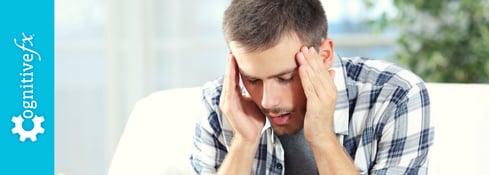
Concussions can have long-term physical, cognitive, and emotional effects. Symptoms such as brain fog, headaches, and depression can last for months or years after the initial injury. When the...
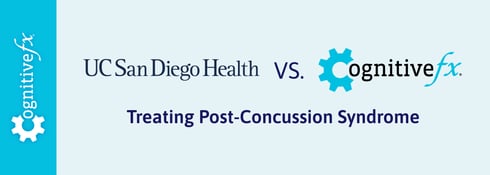
UC San Diego Health offers various pathways for patients to be assessed and treated for concussions. Their main focus involves treating recently acquiredsports-related head injuries, but patients...
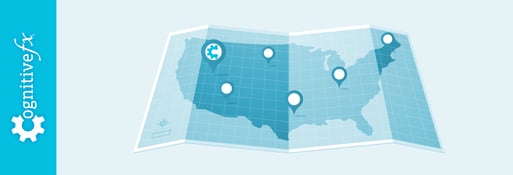
The medical community can be painfully slow to adopt best practices, and concussion care is no exception. Many doctors and clinics recommend “cocooning” — i.e., rest and inactivity in a dark room...

After suffering a mild traumatic brain injury, you might expect to feel off for a few days before being able to function at your normal level again. However, a rapid return to normal is not the case...
Published peer-reviewed research shows that Cognitive FX treatment leads to meaningful symptom reduction in post-concussion symptoms for 77% of study participants. Cognitive FX is the only PCS clinic with third-party validated treatment outcomes.
READ FULL STUDY